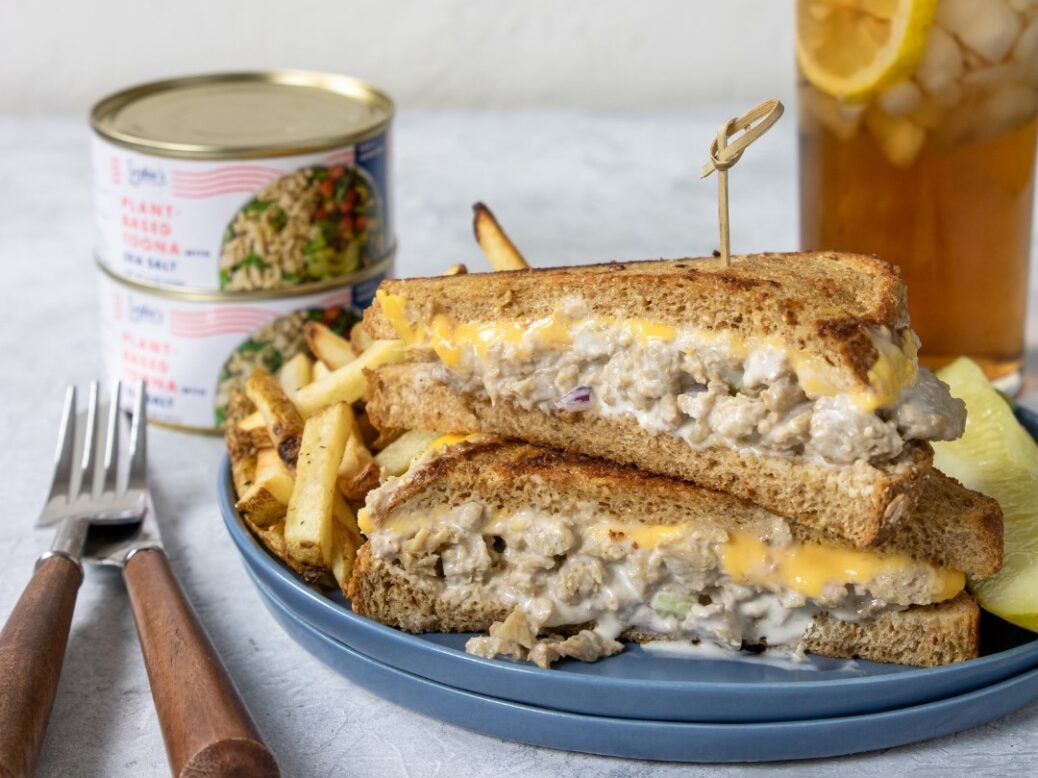
Smartly-funded start-ups and main meals producers are making a bet large that replacement seafood – plant-based, fermented and cell-cultured – would be the subsequent, large, new alternative in replacement proteins.
America marketplace for choices to seafood is tiny, with plant-based seafood dominating the area of interest. In step with information from marketplace analysis company SPINS, plant-based seafood by itself accounts for most effective about 0.1%, (or round $12m in annual gross sales) of all of the US seafood marketplace – and that’s in spite of gross sales rising by way of 23% in 2020.
Fermented seafood, represented essentially by way of mycoprotein-focused industry Quorn Meals, is these days too small to subject. Mobile-cultured seafood, which is produced by way of cultivating the cells of marine mammals, remains to be within the pre-launch degree.
Style and texture important
Choice seafood is at the present a minnow. On the other hand, it’s very similar to the place replacement dairy was once within the Nineties and the place replacement meat was once a decade in the past, so I trust the start-ups, traders and established meals firms diving into the distance that there’s alternative there. The extra vital questions contain how large a possibility there may be – does the dimensions of the chance justify the prime stage of funding we’re seeing? – and what it is going to take for that chance to materialise. What is going to it take to create and construct a marketplace for plant-based, fermented and cultivated seafood?
The whole US seafood marketplace is massive, amounting to round $15bn in annual gross sales. If, as an example, the alternative-seafood phase can slice off 5-7% of that overall by way of 2030 – an inexpensive purpose however now not simple to reach – that may be considerable, amounting to just about $1bn in annual gross sales, which is the place I believe the distance must be by way of then as a way to correctly scale and brought critically.
The 2 keys to creating replacement seafood a viable phase are style and shopper acceptance, which pass hand-in-hand. Those are the principle attributes for any alternative-seafood product – plant-based, fermented or cell-cultured. Sustainability problems, the overfishing of the oceans, the negatives of aquaculture, all of that are getting used to marketplace replacement seafood and may have a spot within the advertising combine, are secondary and tertiary product attributes. Shoppers should settle for replacement seafood as viable substitutes for wild-caught and farmed seafood. Choice-seafood merchandise should style just right to customers.
A contemporary learn about by way of shopper insights company Kelton World commissioned by way of non-profit organisation and alternative-protein suggest The Excellent Meals Institute discovered just about 3 in 4 customers are excited by replacement seafood. In step with the learn about, the vast majority of the ones are omnivores and flexitarians who’re on no particular nutrition.
The learn about confirmed an important attributes of different seafood to customers are flavour and texture. A majority cited style and texture as the 2 primary obstacles to selecting the goods over wild-caught and farmed seafood. Shoppers watch for disliking the style and texture of different seafood, stumbling blocks that may be conquer however can ceaselessly imply ongoing adjustments to recipes and formulations.
Classes from plant-based meat
It’s at all times instructive to use some analogous product building historical past when having a look at a nascent phase like replacement seafood. Choice meat, in particular plant-based meat, which has been in the marketplace for over 3 a long time, is a superb instance on this case.
Traditionally, style and texture have been at all times the proscribing elements for plant-based meat manufacturers in gaining popular distribution in supermarkets (in addition to placement within the meat case in shops the place it was once presented on the market), together with achieving one thing just about popular shopper acceptance.
Past Meat and Inconceivable Meals have damaged that code to a super stage, acquiring popular retail distribution, placement in retailer meat instances and a shopper base that incorporates meat-eaters. The style and texture in their alternative-meat merchandise carefully approximate the style and texture of typical meat.
Style and texture are the motive force at the back of the recognition of those two replacement meat manufacturers, in addition to a couple of others following of their footsteps. All of the different attributes – together with sustainability advantages, being vegan choices – apply as secondary and tertiary product attributes that may inspire shopper trial however now not repeat gross sales.
Restricted margin for error
The opposite-seafood manufacturers that can prevail, whether or not plant-based, cell-cultured or fermented, will accomplish that essentially as a result of they have got merchandise that experience a texture and style very similar to the actual factor. Shoppers will settle for a plant-based tuna or salmon that varies quite in texture and style in comparison to wild-caught salmon (simply as farmed salmon will have a quite other style than wild-caught) however the margin of error for choices may be very small. Shoppers may check out an alternative-seafood product in response to its secondary and tertiary attributes however repeat gross sales will most effective come from product acceptance – which means that style and texture.
Funding bucks are flooding into replacement seafood however there’s a possibility manufacturers may assume that, with sufficient investment and just right advertising, they may be able to construct a emblem and jointly construct a phase in response to the ones secondary and tertiary attributes.
Negatives seldom, if ever, paintings in meals advertising. Past Meat and Inconceivable Meals each use anti-animal meat messaging. Nevertheless it’s secondary to product. Texture and style are central to their proposition. The message is: “We’re replacement however glance, really feel and style identical to, or higher than, the ‘actual factor’.”
For replacement seafood, we’re most effective within the first quarter of the sport. There are these days a handful of manufacturers in the marketplace, most commonly all plant-based, however new manufacturers are being created at breakneck velocity and numerous present manufacturers are making improvements to the standard in their merchandise. In simply the final two years, a lot of plant-based seafood choices were offered that style some distance higher than merchandise introduced most effective a few years in the past.
Retail distribution for alternative-seafood manufacturers is spotty however store acceptance is rising swiftly. Extra popular distribution is vital now not just for added availability however as it alerts to customers that outlets to find replacement seafood value promoting.
The following iteration of different seafood will likely be cell-cultured merchandise. The ones creating cell-cultured seafood are waiting for FDA approval to hit the marketplace however they may lend a hand the wider alternative-seafood phase succeed in the 5-7% proportion of the $15bn US seafood marketplace I counsel is had to make it an actual contender.
On the other hand, shopper acceptance will likely be harder for cell-cultured seafood than for plant-based merchandise as a result of a lack of information a few of the overwhelming majority of customers concerning the new meals. The companies already within the house will wish to paintings laborious to persuade customers concerning the protection credentials of the goods, even if regulatory pointers are revealed.
Moreover, quite a lot of business and shopper teams oppose permitting cell-cultured seafood to in truth be referred to as seafood, which might most effective upload to shopper and store confusion. Plant-based meals merchandise, then again, are totally approved by way of customers and outlets.
The keys to good fortune and shopper acceptance for all alternative-seafood manufacturers, whether or not cell-cultured, plant-based or fermented, are texture and style. Product first. All else is secondary and tertiary.
Simply Meals columnist Victor Martino is a California-based strategic advertising and industry building advisor, analyst, entrepreneur and author, specialising within the meals and grocery business. He’s to be had for session at: victorrmartino415@gmail.com and https://twitter.com/VictorMartino01.

